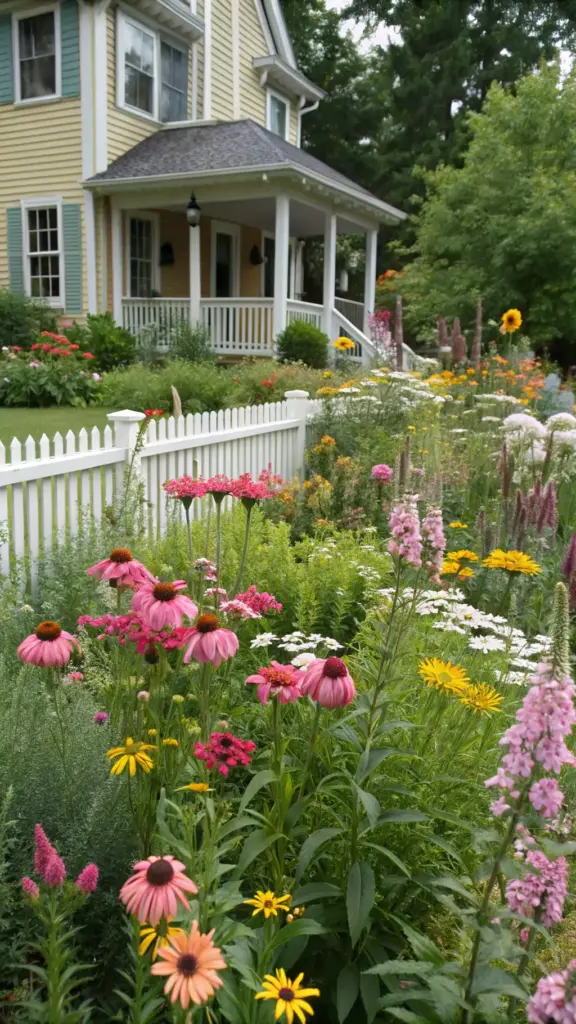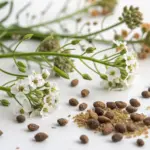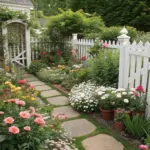3. Wildflower Wonderland: Embrace Nature’s Chaos

Let me tell you something—there’s nothing quite like the magic of a wildflower garden. I remember planting my first wildflower patch years ago, and it felt like I was unleashing a little bit of chaos into my backyard. But here’s the kicker: that chaos turned out to be one of the most rewarding gardening experiences I’ve ever had. Wildflowers are low-maintenance, vibrant, and they attract all sorts of pollinators. Plus, there’s something undeniably freeing about letting nature take the wheel for once. If you’re ready to embrace the untamed beauty of wildflowers, let’s dig in.
Why Wildflowers Are Low-Maintenance Yet Incredibly Rewarding
Here’s the deal with wildflowers: they’re basically the chill friends of the plant world. Unlike fussy perennials or high-maintenance annuals, wildflowers thrive on neglect. Seriously! These hardy plants are adapted to grow in tough conditions, which means less watering, fertilizing, and stressing for you. And let’s not forget the payoff—they burst into color at just the right time, creating a kaleidoscope of blooms that’ll make your heart sing.
One year, I forgot to water my wildflower patch during a heatwave (oops), and guess what? They were still standing tall while my other plants looked like they’d given up. That’s the beauty of wildflowers—they’re survivors. Plus, they’re a magnet for bees, butterflies, and hummingbirds. Watching these little visitors flit around your garden is pure joy.
Step-by-Step Guide to Seeding a Wildflower Patch
Planting a wildflower patch might sound intimidating, but trust me, it’s easier than you think. Here’s how I did it:
- Choose the Right Spot: Wildflowers love sunlight, so pick a spot that gets at least 6 hours of direct sun daily.
- Clear the Area: Remove weeds and grass to give your seeds a fighting chance. I used a hoe and some elbow grease—it wasn’t glamorous, but it worked.
- Prepare the Soil: Loosen the soil lightly with a rake. Don’t overdo it; wildflowers prefer undisturbed soil.
- Spread the Seeds: Mix your seeds with sand (this helps distribute them evenly) and scatter them by hand. No need to bury them deep—just press them gently into the soil.
- Water Gently: Give the area a light watering to help the seeds settle. After that, Mother Nature usually takes care of the rest.
Pro tip: Plant in early spring or fall when temperatures are cooler. This gives the seeds the best chance to germinate without frying in the summer heat.
Popular Wildflower Mixes for Different Climates
Not all wildflowers are created equal, and picking the right mix for your climate is key. For example:
- Northeastern U.S.: Look for mixes with black-eyed Susans, coneflowers, and lupines. These thrive in cooler temps.
- Southwestern U.S.: Drought-tolerant options like California poppies, desert marigolds, and bluebonnets are perfect for arid conditions.
- Pacific Northwest: Try mixes featuring columbines, foxgloves, and camas lilies—they love the moist, mild weather.
I once made the mistake of planting a Midwest mix in my dry Southern yard. Let’s just say it didn’t go well (lesson learned). Always check the seed packet for climate recommendations before buying.
How to Maintain Balance Without Over-Managing
The trick to keeping a wildflower garden looking intentional instead of messy is finding the sweet spot between hands-off and hands-on. Wildflowers don’t need much, but they do benefit from a little TLC. Deadhead spent blooms to encourage new growth, and mow the area down to about 6 inches at the end of the growing season. This helps spread seeds naturally for next year.
But here’s the golden rule: resist the urge to micromanage. Let the plants self-seed and fill in gaps on their own. It’s all about embracing that natural, untamed vibe. Trust me, the results are worth it.
Ready to Step Into a Fairy Tale?
If you loved the idea of a wildflower wonderland, wait until you see what’s coming next! In the next section, we’ll explore how to create a fairy tale cottage garden that’s brimming with charm and whimsy. Click the “next” button below to keep reading—you’re going to adore this magical twist!









GIPHY App Key not set. Please check settings